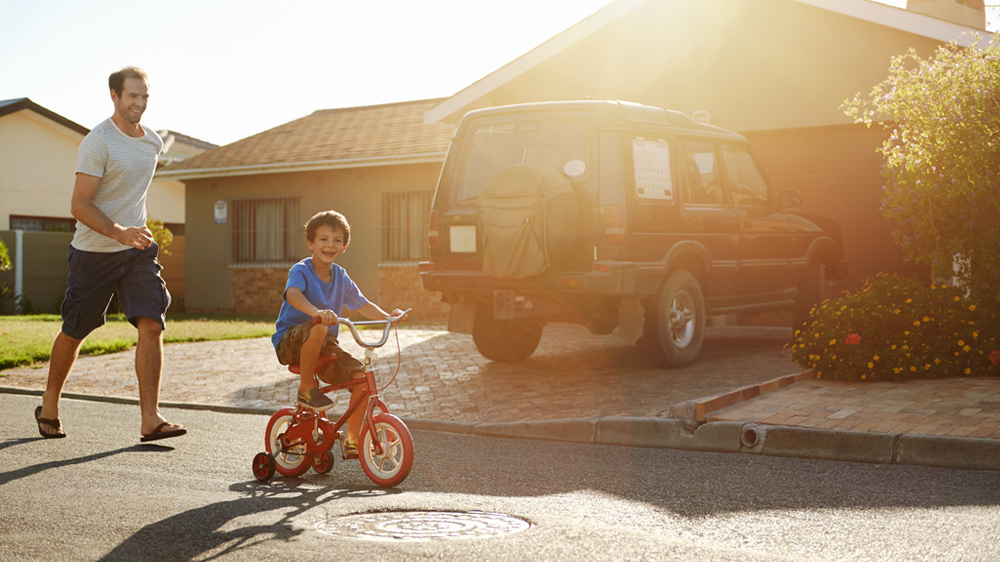You still love that darling little home for sale in Alexandria, VA, you were so lucky to snag, the one that sits right in the middle of all the action. But now it’s feeling a little … cramped. Or maybe you live in a fourth-floor walk-up that just won’t do now that you’re a parent. Having children in tow means your priorities often shift. Proximity to the bars, restaurants, and nightlife you used to love becomes less important than school districts, crime rates, and a sense of community. Here’s how to find the great perks for families in your next neighborhood.
Neighborhood Features To Look For If You’re Starting A Family

An area geared to young professionals differs greatly from a family-friendly neighborhood. Learn what to look for when you’re starting a family.
1. School district information
The school district you choose is one of the weightiest decisions for many parents. Of course, you want a school that offers a high-functioning environment for learning. You’ll get an A-plus for research when you use Trulia Maps to help with your search. If you want to know more about each school district, use the Schools layer by choosing your city and clicking on “Schools.” You’ll find the GreatSchools rating and the number of students per teacher. Once you spot an area you like, visit the neighborhoods that feed into that school. GreatSchools’ ratings are based on test score and although a good starting point, test scores are not the only factor families use to determine the right school district for them. Once you spot an area you like, visit the neighborhoods that feed into that school.
Visit the school in person as well if you can. “In some areas, the most popular and high-performing schools are oversubscribed and overcrowded,” says Alina Adams, author of Getting Into NYC Kindergarten. “Don’t just ask if the schools are good; ask if they usually have room for all the students who want in.”
2. Crime rates
From the moment you become a parent, your job is to keep your child safe. You babyproof the home, maintain regular doctor visits, and keep your child out of harm’s way. Searching for a neighborhood with a low crime rate ranks right up there. You might assume that a rural area is safer than the suburbs, which is safer than the city. But that isn’t always the case.
You can check out the crime risk of any neighborhood by using the Crime layer in Trulia Maps. The maps let you explore the safety of an area, right down to reported incidents. If you love the city and wish to expose your children to culture and the arts as Joan Kagan, sales manager at TripleMint Real Estate in New York, NY, did, use the Crime layer to help narrow down neighborhoods for your safety preferences. “You want to feel safe in your neighborhood, especially when you have children,” says Kagan, who raised three boys on the city’s Upper West Side. “In addition, once your children are teenagers, it is great for them to be able to explore the city. You want to feel safe with them leaving your apartment on their own.”
3. Strong community network
When you’re just starting a family, of course you’ll keep your childless friends. But face it: Your interests are suddenly quite a bit different. While all you want to do is talk about the best ways to get your baby to sleep through the night, all they want to do is stay out all night (and sleep in the next morning!). So you’ll need to build a new network for yourself and for your children.
If this tops your list of priorities, look for evidence of other families while you’re on the house hunt. Are children playing on the sidewalks? Bikes or wagons in the front yard? Families out together for a walk? All of these signs point to a thriving neighborhood for families — and lots of potential friends for you and your kids.
4. Streets drivers use as shortcuts
Pay attention to the kinds of streets in each neighborhood. If a neighborhood has lots of long streets that drivers can use as shortcuts during rush hour, your peaceful neighborhood could resemble a NASCAR track twice a day. To avoid that, look for streets that are horseshoe-shaped or are cul-de-sacs. “Kids love to play outside in the street with other kids. They can’t do that if cars are barreling through the neighborhood at high speed,” says Brent Shedd, who recently moved to a family-friendly neighborhood in the San Francisco Bay Area in California. “Finding a neighborhood that’s off a high-traffic route, especially one with curves that will slow cars down, is always going to be a better option for kids.”
5. Sidewalks
Don’t discount the unassuming sidewalk, an important family-friendly neighborhood feature. “When we first started our family in Chicago, the sidewalk saved my sanity,” says Ali Wenzke, moving expert and blogger at The Art of Happy Moving. “The ability to stroll the baby around the neighborhood at a moment’s notice can’t be overstated. As the kids grew up, we used the sidewalk for learning how to ride a bike or showing off our artistic talents with sidewalk chalk.”
6. Parks or playgrounds
When you’re looking for a family-friendly neighborhood, you want to actually see families out and about. If there aren’t any neighborhood parks or playgrounds, that might be challenging. “When you are starting a family, parks provide the perfect place to get to know other families in the area,” says Wenzke. “Park playdates need not be scheduled, as you’ll inevitably run into someone you know at the neighborhood park.”
By: Laura Agadoni